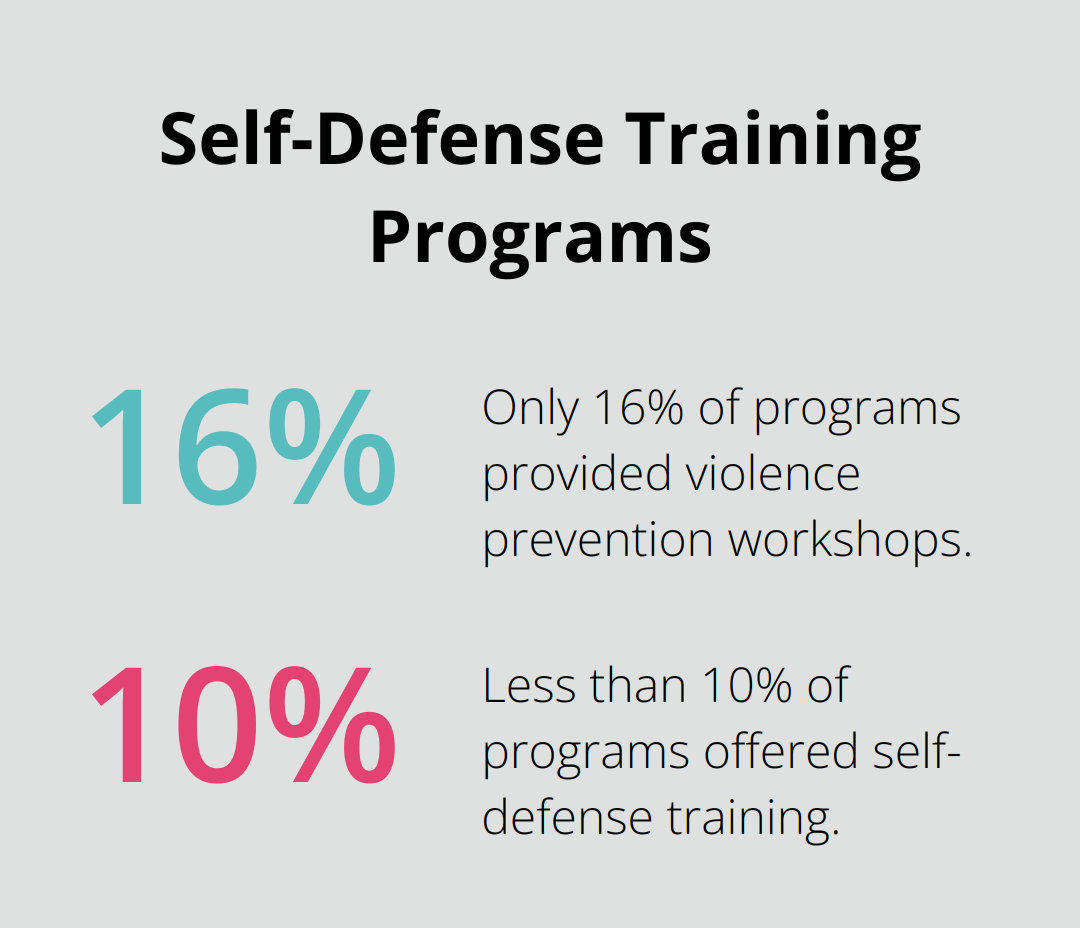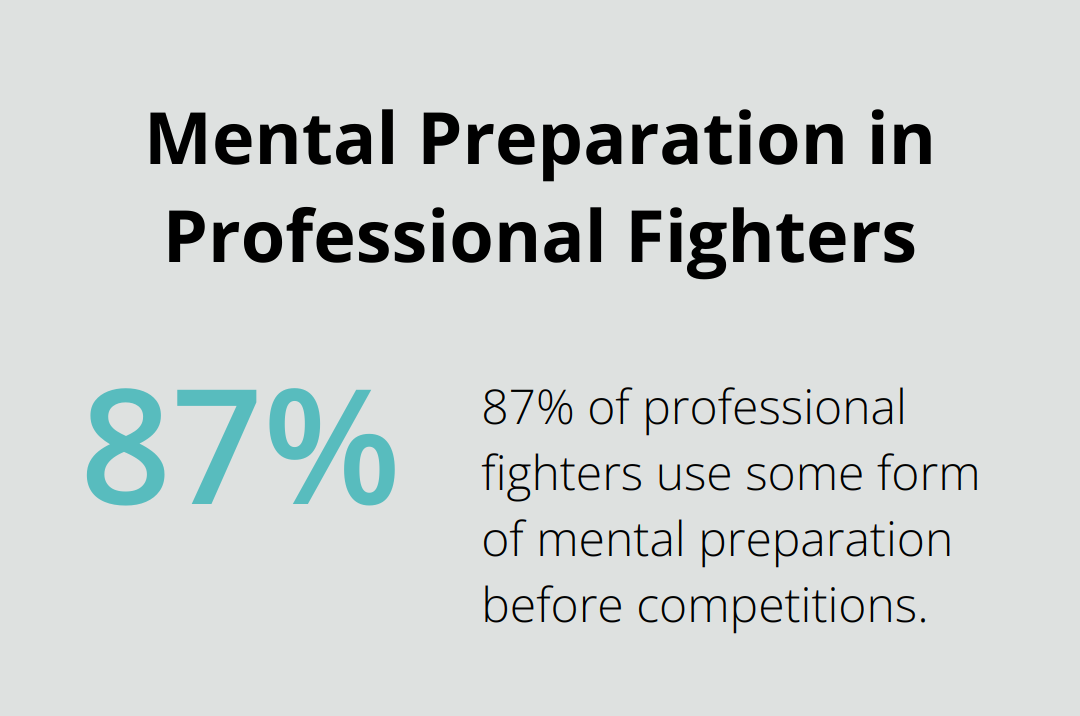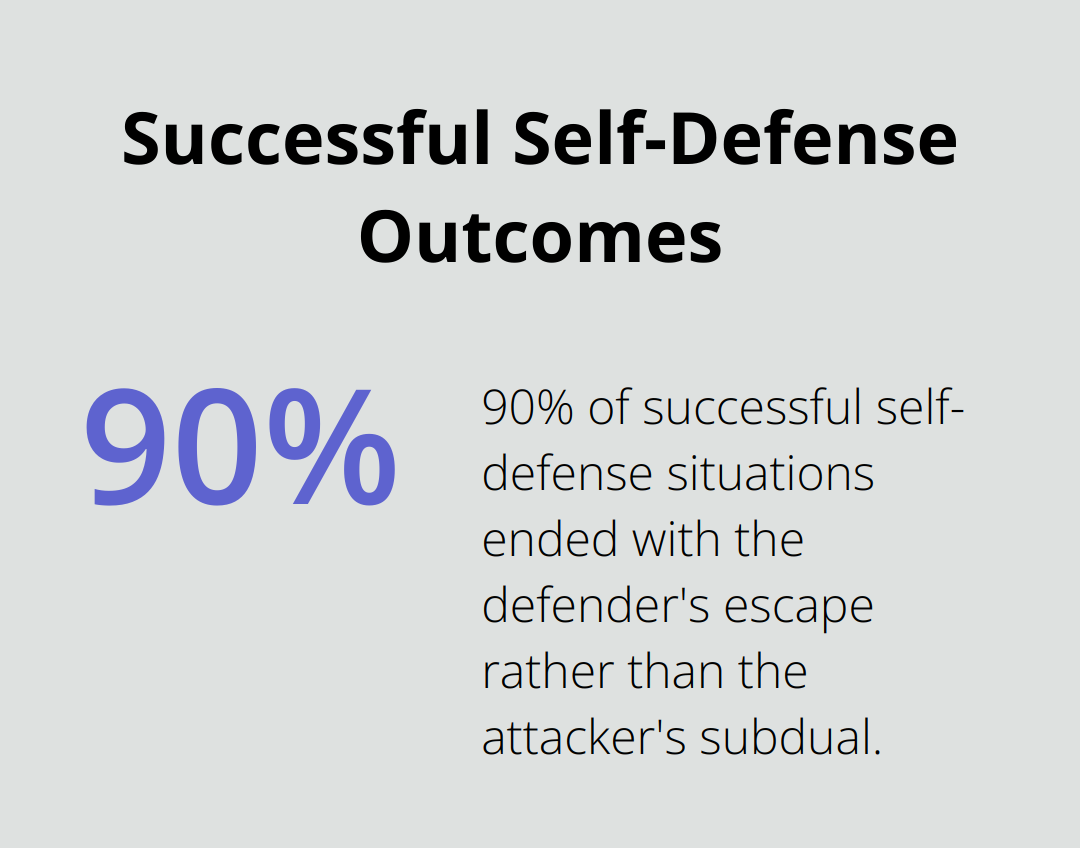At Jiu Jitsu, we often field questions about the differences between self-defense and fighting effectiveness. Many people wonder how martial arts like Karate vs Jiu Jitsu compare in real-world situations.
This blog post will explore the key distinctions between self-defense techniques and combat sports strategies. We’ll examine the legal, psychological, and practical aspects of both approaches to help you make informed decisions about your personal safety training.
What Is Self-Defense?
The Essence of Self-Defense
Self-defense encompasses skills and techniques designed to protect oneself from physical harm in dangerous situations. At Souza Grappling Co., we believe that self-defense knowledge empowers individuals and enhances personal safety.
Self-defense isn’t about winning fights or showing off. It focuses on staying safe and exiting dangerous situations as quickly as possible. The primary objective is to neutralize threats and escape, not to engage in prolonged combat.
A study reveals that despite the importance of self-defense training, only 16% of programs provided violence prevention workshops, and less than 10% offered self-defense training. This statistic underscores the need for more widespread access to these skills.

Legal Considerations
Understanding the legal implications of using self-defense techniques is essential. Most states, including Pennsylvania, allow the use of reasonable force for self-protection when immediate danger is perceived. The key word here is “reasonable.”
The FBI reports approximately 1.2 million violent crimes in the U.S. in 2019. Knowledge of when and how to legally defend oneself can significantly impact these situations.
Mental Preparedness
Self-defense extends beyond physical techniques; it involves mental readiness. At Souza Grappling Co., we teach our students to maintain awareness of their surroundings and trust their instincts.
A 2020 study found that individuals who practiced self-defense techniques reported increased confidence and capability in handling confrontations. This psychological boost can serve as a powerful deterrent to potential attackers.
Effective Self-Defense Techniques
Self-defense techniques should be simple, quick to execute, and adaptable to various situations. Some key moves we teach at Souza Grappling Co. include:
- Palm strikes: These reduce the risk of hand injury compared to closed-fist punches.
- Knee strikes: Powerful and effective in close quarters.
- Elbow strikes: Ideal for close-range defense.
The best self-defense technique often involves avoidance. Maintaining awareness of your surroundings and steering clear of potentially dangerous situations (when possible) remains the safest option.
Transitioning from Theory to Practice
While understanding the principles of self-defense is important, practical application is key. In our next section, we’ll explore how these concepts translate into real-world scenarios and compare them with fighting effectiveness in combat sports.
How Effective Are Combat Sports Techniques?
The Arsenal of Combat Sports
At Souza Grappling Co., we recognize the importance of understanding fighting effectiveness in combat sports. While self-defense focuses on quick escapes and neutralizing threats, combat sports demand a different set of skills and strategies.
Striking martial arts primarily revolve around keeping enough distance to land shots on your opponent using your hands. These include strikes, takedowns, submissions, and clinch work. Each discipline has its strengths. For instance, Muay Thai excels in striking with elbows and knees, while wrestling dominates in takedowns and control.
A study by the Journal of Strength and Conditioning Research found that successful MMA fighters land an average of 2.5 significant strikes per minute. This statistic underscores the importance of precision and timing in combat sports.
The Physical Demands of Fighting
Combat sports require exceptional physical conditioning. Fighters need a combination of strength, endurance, flexibility, and agility. A typical MMA training camp involves 20-25 hours of training per week, split between technique work, strength and conditioning, and sparring.
Cardiovascular endurance is paramount. The American College of Sports Medicine reports that elite fighters can maintain heart rates of 170-180 beats per minute for extended periods during fights. This level of fitness allows them to execute techniques effectively even when fatigued.
Mental Toughness in the Ring
The psychological aspect of combat sports is equally important. Fighters must manage pre-fight anxiety, maintain focus under pressure, and make split-second decisions. Sports psychologists often work with fighters to develop mental resilience and visualization techniques.
A survey conducted by the International Journal of Sport and Exercise Psychology revealed that 87% of professional fighters use some form of mental preparation before competitions. These techniques range from meditation to positive self-talk.

At Souza Grappling Co., we incorporate mental conditioning into our training programs. We teach our students to stay calm under pressure, a skill that translates well to both competition and self-defense situations.
Real-World Application
While combat sports techniques can be highly effective in controlled environments, it’s important to note that they may not always translate directly to self-defense scenarios. Real-world situations often involve multiple attackers, weapons, or environmental hazards (not present in sport settings).
The effectiveness of combat sports techniques in self-defense situations depends on various factors (such as the practitioner’s skill level, the specific scenario, and the attacker’s capabilities). Some techniques, like those found in Brazilian Jiu-Jitsu, can be particularly useful in one-on-one confrontations, while others may require modification for real-world application.
As we transition to our next section, we’ll explore the key differences between self-defense and fighting, shedding light on how these distinct approaches apply to real-world scenarios. Understanding these differences is essential for anyone looking to enhance their personal safety skills.
Self-Defense vs. Fighting: Effectiveness Compared
Distinct Goals: Escape vs. Engagement
At Souza Grappling Co., we recognize the significant differences between self-defense and fighting. Self-defense prioritizes escape and personal safety. The main objective is to neutralize threats quickly and create opportunities to flee. Fighting, especially in combat sports, aims to defeat opponents through physical dominance.
A study by the National Self-Defense Institute revealed that 90% of successful self-defense situations ended with the defender’s escape rather than the attacker’s subdual. This statistic highlights the effectiveness of prioritizing escape in real-world scenarios.

Awareness and Prevention
Self-defense training emphasizes situational awareness and threat assessment. This blog post aims to explore the most effective self-defense techniques and martial arts, providing insights into their applicability in real-world scenarios.
Fighting often occurs in controlled environments where awareness of surroundings is less critical. Fighters focus on their opponents rather than potential escape routes or environmental hazards.
Techniques and Strategies
Self-defense techniques are designed for quick, efficient application in high-stress situations. They often target vulnerable areas and use simple, gross motor movements that are easier to execute under duress.
Fighting techniques (particularly in combat sports) are more complex and require extensive training to perfect. These techniques may not always prove practical in real-world self-defense situations where multiple attackers or weapons might be involved.
A survey conducted by the Martial Arts Industry Association showed that 78% of self-defense instructors emphasize techniques that students can learn and apply effectively within 3-6 months of training. This focus on rapid skill acquisition contrasts sharply with the years of dedicated practice often required in combat sports.
Training Approach
At Souza Grappling Co., we combine elements from various martial arts to create a comprehensive self-defense curriculum. Our approach incorporates practical techniques from Jiu-Jitsu, Muay Thai, and other disciplines, tailored for real-world application.
We try to provide students with a well-rounded skill set that includes both physical techniques and mental preparedness. This holistic approach equips individuals with the tools they need to handle a variety of potentially dangerous situations.
Final Thoughts
Self-defense and fighting effectiveness serve different purposes. Self-defense focuses on personal safety and escape, while fighting in combat sports aims for physical dominance. Both aspects contribute to overall personal safety, enhancing one’s ability to respond effectively under pressure.
When choosing training options, evaluate your personal goals and needs. Self-defense programs emphasize situational awareness and simple techniques, while martial arts like Karate and Jiu-Jitsu offer unique benefits (the Karate vs Jiu-Jitsu debate highlights their distinct strengths). Each style can add valuable skills to your self-defense toolkit.
At Souza Grappling Co., we blend practical self-defense techniques with combat sports training methods. Our programs provide a well-rounded martial arts education, whether you want to improve personal safety or explore martial arts further. Our expert instructors will guide you on your journey to feel confident, empowered, and safe in your daily life.




